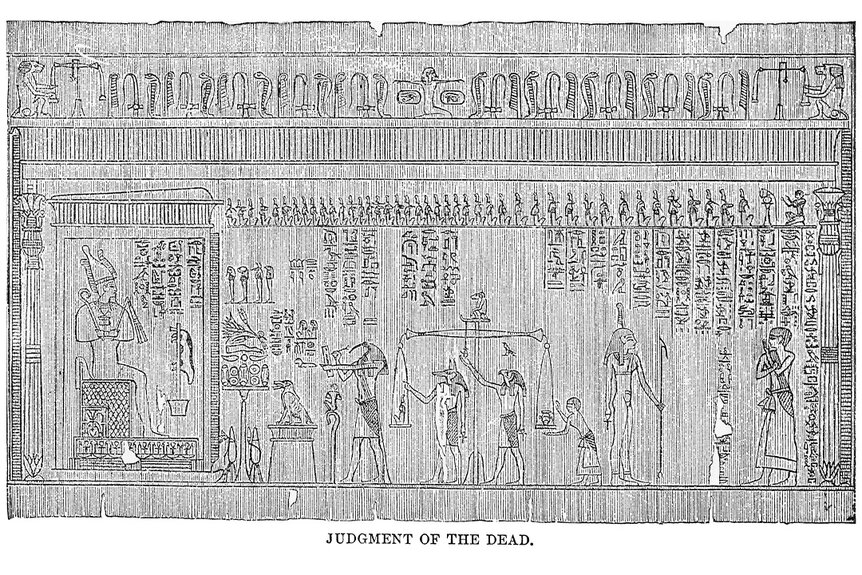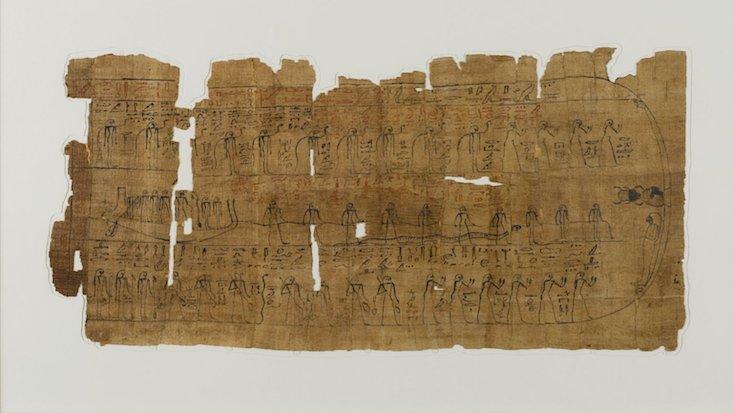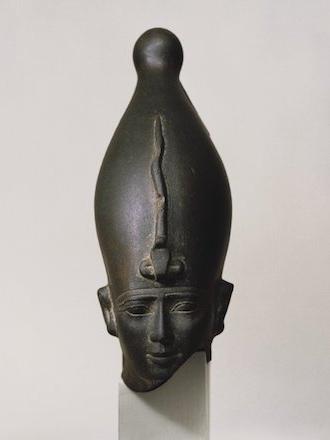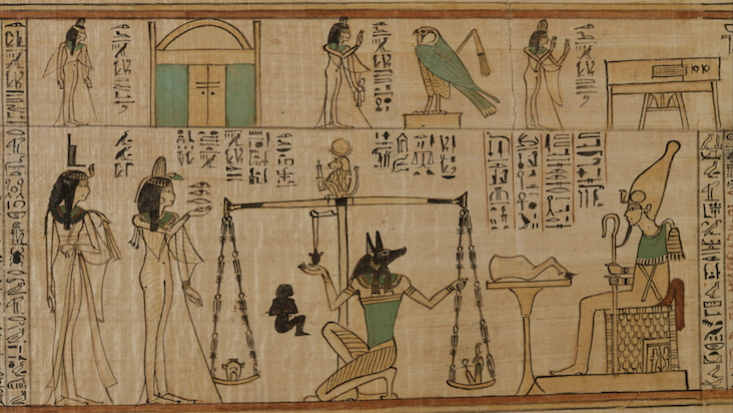Anthropology
Related: About this forumArchaeologists Found the Lost 'Book of the Dead' Buried in an Egyptian Cemetery
Story by Tim Newcomb • 9mo • 3 min read

Egyptian archaeologists located a lost 3,500-year-old cemetery containing mummies, statues, and a Book of the Dead papyrus scroll.
© mikroman6 - Getty Images
- Egyptian archaeologists recently located a lost 3,500-year-old cemetery containing mummies and statues—among other discoveries.
- A particularly exciting find was a Book of the Dead papyrus scroll measuring over 43 feet long—a rare surviving copy of the traditional burial item.
- The team behind the find was mum on the details of the textual discovery.
Ancient Egyptians sure knew how to create a burial scene—curated resting places complete with canopic jars holding the organs of the deceased and a Book of the Dead scroll with text meant to help navigate the world beyond the grave.
One of those scenes was recently located in central Egypt, when archaeologists discovered a New Kingdom cemetery that dates back to more than 3,500 years ago and features mummies, canopic jars, amulets, statues, and a papyrus scroll containing a portion of the Book of the Dead that measures more than 43 feet long.
This scroll is the first complete papyrus found in the Al-Ghuraifa area, and is “characterized by being in good condition,” Mustafa Waziri, secretary general of the Egyptian Supreme Council of Antiquities, said in a translated Arabic statement from the Ministry of Tourism and Antiquities.
While the cemetery—dating to sometime between 1550 BC to 1070 BC—was significant for the hundreds of archaeological finds and tombs carved into the rock located within its boundaries, the discovery of what could be a copy of the Book of the Dead captured the attention of experts as a truly rare find. But with few details released to the public about the contents of the scroll—believed to be 43 to 49 feet in length—there’s plenty of questions remaining about this particular copy of the traditional Egyptian cultural book.
More:
https://www.msn.com/en-us/news/world/archaeologists-found-the-lost-book-of-the-dead-buried-in-an-egyptian-cemetery/ar-AA1j60pv
Judi Lynn
(164,047 posts)By Kellie Warren
The Book of the Dead prevails in both popular culture and current scholarship as one of the most famous aspects of ancient Egyptian culture. This funerary text provides some of the most vivid and enduring images from the ancient world – there are few who have not heard some version of the Book of the Dead’s afterlife mythology. Familiar scenes – like a scale weighing a heart of the deceased against a feather or the eternal destruction of a soul by a deity composed of animal parts – originate from the Book of the Dead. With such impressive narratives, it is clear why Egyptian beliefs about the afterlife are so thoroughly ingrained in our collective memory. But despite the Book of the Dead’s lasting fame, it is often misunderstood or purposefully romanticized for the sake of an exhilarating story, as in the cultural phenomenon of The Mummy in 1999. So what is the Book of the Dead, how was it significant to Egyptians in the past and how do Egyptologists use this important resource today?

Sheet from a Book of the Dead, ca. 1075-945 BCE
Photo: Brooklyn Museum, Charles Edwin Wilbour Fund
“The Chapters/Book of Going Forth By Day” is the official translation of the title given to a collection of papyrus rolls on the same subject known commonly as the Book of the Dead. Though the word “book” brings to mind a story or text written by a singular author and reprinted repeatedly in the same form, these texts have multiple authors and each version has its own variations. These texts served as a guide for the dead to use on their journeys to the afterlife. Each was prepared by scribes for burials, with varying quality depending on the scribe’s skill, and some were prepared with blank spaces to later fill in the name of the dead. In addition to the long-form papyrus versions of the Book of the Dead, spells and passages from the text were recorded other places – on tomb walls, mummy wrappings and even inside King Tut’s golden mask.

Head of the God Osiris, ca. 595-525 B.C.E. Slate
The Book of the Dead first appeared in the New Kingdom, but the text evolved from a long tradition of magical funerary writing. The oldest of these writings, the Pyramid Texts, were available exclusively to Egyptian royalty. As religious beliefs on the afterlife changed, copies of the Coffin Texts – an adapted version of the Pyramid Texts – were written on coffins and included in the tombs of non-royals, such as wealthy Egyptians and elites. By the New Kingdom, the afterlife was understood as accessible to all who could afford their own Book of the Dead, a handy guidebook providing the spells necessary for the perilous, confusing and elaborate trials faced to earn eternal life among the gods.
The gods Osiris, associated with resurrection, and Re, associated with the sun, star in the Book of the Dead. Forty-two additional gods appear to judge and test the newly departed. Although the text itself varies in content and order, the narrative is generally divided into four main sections: the deceased enters the underworld and regains the physical abilities of the living, the deceased is resurrected and joins Re to rise as the sun each day, the deceased travels across the sky before judgement in the underworld by a panel of gods and, finally – assuming the soul hasn’t been destroyed – the deceased joins the gods. To progress through the complex challenges in these stages, the dead must speak the right names and spells at the right time and respond with the right answers to the gods’ questions. In one interesting and curious case, the deceased must name various parts of a sentient doorway before passing. Luckily, the Book of the Dead conveniently holds all the required information.

Book of the Dead for the Singer of Amun, Nany, ca. 1050 BCE, Papyrus, paint
Photo: The Metropolitan Museum of Art, Rogers Fund, 1930
More:
https://arce.org/resource/book-dead-guidebook-afterlife/
rampartd
(3,748 posts)they are handling that like - very gently.
did that article say a 48 foot scroll! maybe 1500 years older than the dead sea scrolls. i'd love to see it but do be very careful unrolling that thing.
3Hotdogs
(15,030 posts)Seems, "Jesus of Nazareth" was supposed to have been named Herman of Judea. But Mary was holding Herman and while the priest was pouring water over Herman's head, Mary stubbed her toe......
That's all they have translated so far.
ActRaiser
(45 posts)Seriously, though, this is incredible. When I was young I actually had a copy of the Book of the Dead - I wanted to be an archaeologist. I wonder if the discovered version holds new information!
GiqueCee
(3,390 posts)... definitely not a summer beach read. ![]()